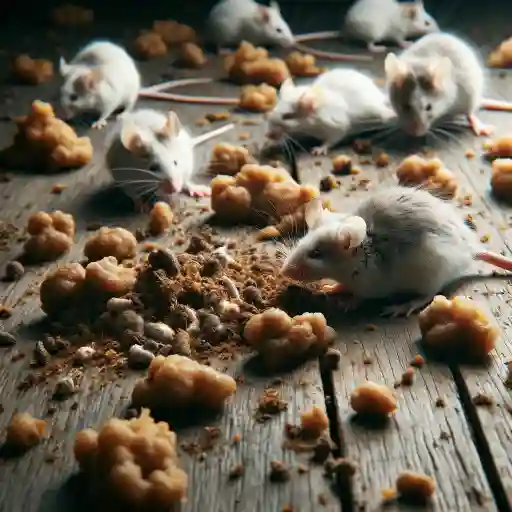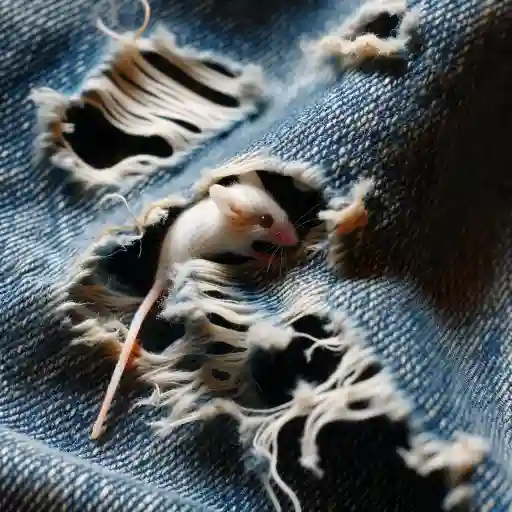Mice in themselves are not a problem, but having them in your home definitely is. They are known to spread diseases and can cause significant damage to the infrastructure of your house. So in this post, I will show you how to tell if you have mice in your walls. We are going to focus on 5 major signs that you might be dealing with a mice infestation in your home. Of course, these are the top signs I always come across when treating mice problems in home and office walls.
How to Tell if You Have Mice in Your Walls
1. Droppings near the wall

Let’s start with a very common sign, which is mice droppings. This is one of the most noticeable signs of a mouse infestation as they often urinate and defecate throughout the day. So, if you have these critters on your walls, you will notice their droppings all over the places they travel.
A mouse can produce between 50 to 75 droppings daily. If you have mice in your walls, you might find their feces in cabinets, under appliances, and other areas they have explored when out of the wall. These droppings are usually black, pellet-shaped with pointed ends. Mice urine can also leave behind stains and unpleasant smells, which are clear indicators of their presence.
2. Squeaky noise at night

Do you hear some squeaky sound or just noise of movements you can’t explain? This is often a sign to tell if you have mice in your walls, especially noticeable in the mornings and at night when the house is quieter. You might hear scratching sounds and the scurrying of mice in your walls and possibly vents. Sometimes these noises can be loud enough to be mistaken for larger animals like raccoons or squirrels.
To confirm if the sounds you hear are from mice, you can tap on the wall where the noise is coming from. Typically, the noises will stop for a short while before starting again.
3. Clothes Holes

You can also tell if you have mice in your walls if you have noticed torn clothes. Mice build their nests by shredding and collecting fibrous materials such as paper, cushion stuffing, insulation, and occasionally, your clothing. If you find shredded fabric or similar materials, especially in dark, rarely used spots, it’s likely that mice are nesting in your walls.
4. Tunnels

Mice, despite their small size, have very strong teeth that can chew through food packaging, plastic, wood, and even electrical wires, posing a serious risk of fire. They might choose to live in your walls, but they usually prefer nesting in warm places like the attic or near heat-producing appliances such as stoves, dishwashers, furnaces, and water heaters.
Mice create circular holes and tunnels about 1 inch in diameter for accessing food and moving around. These holes, often the size of a golf ball, can be seen in your insulation and are a sign of mouse tunneling.
5. Food Paths

As mentioned earlier, mice have a habit of chewing their way around your house, including into your food. If you have a mouse infestation, you might notice holes at the bottom of dog food bags, bird seed containers, and pantry boxes. Sometimes, you can even see the clear teeth marks left by the mice.
In areas such as your pantry or near where mice nest, you may find a lot of crumbs, empty seed hulls, and other food debris. If you see this, it’s time to dispose of the contaminated food and consider getting a professional inspection to prevent any diseases.
What to Do If You Have Mice in Wall
If you can tell if you have mice in your walls and the infestation seems severe, the best course of action is to call a professional exterminator. They are equipped to handle the situation quickly and efficiently, ensuring the job is completely done.
An exterminator can resolve the issue without causing unnecessary damage to your home, floors, or walls. If you try to tackle the problem yourself, you might end up causing more harm, like creating holes or damaging walls, and still not getting rid of all the pests.
While waiting for the exterminator, you can set up some traps with peanut butter. Classic snap traps are a safe and humane option, particularly if you are concerned about safety. These traps instantly kill mice and are not a danger to children or pets. Just bait the traps with a little peanut butter and place them in areas where you suspect the mice are most active.
Read also: Professional Ways to Find Where Mice Are Getting in





